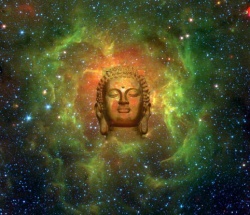Difference between revisions of "Causality"
m (Text replacement - "{{Wiki|related}}" to "related") |
|||
| (One intermediate revision by the same user not shown) | |||
| Line 3: | Line 3: | ||
In common usage, [[causality]] is also the [[relation]] between a set of factors ([[causes]]) and a [[phenomenon]] (the effect). Anything that affects an effect is a factor of that effect. A direct factor is a factor that affects an effect directly, that is, without any intervening factors. (Intervening factors are sometimes called "[[intermediate]] factors".) The connection between a [[cause]](s) and an effect in this way can also be referred to as a [[causal nexus]]. | In common usage, [[causality]] is also the [[relation]] between a set of factors ([[causes]]) and a [[phenomenon]] (the effect). Anything that affects an effect is a factor of that effect. A direct factor is a factor that affects an effect directly, that is, without any intervening factors. (Intervening factors are sometimes called "[[intermediate]] factors".) The connection between a [[cause]](s) and an effect in this way can also be referred to as a [[causal nexus]]. | ||
| − | Though the [[causes]] and effects are typically | + | Though the [[causes]] and effects are typically related to changes or events, candidates include [[objects]], {{Wiki|processes}}, properties, variables, facts, and states of affairs; characterizing the [[causal]] [[relation]] can be the [[subject]] of much [[debate]]. |
The [[philosophical]] treatment on the [[subject]] of [[causality]] extends over millennia. In the {{Wiki|Western}} [[philosophical]] [[tradition]], [[discussion]] stretches back at least to {{Wiki|Aristotle}}, and the topic remains a staple in contemporary [[philosophy]]. | The [[philosophical]] treatment on the [[subject]] of [[causality]] extends over millennia. In the {{Wiki|Western}} [[philosophical]] [[tradition]], [[discussion]] stretches back at least to {{Wiki|Aristotle}}, and the topic remains a staple in contemporary [[philosophy]]. | ||
| Line 19: | Line 19: | ||
According to the {{Wiki|theory}} of [[action]] and result ([[karmaphala]]), our [[karmic]] [[actions]] are the [[principle]] [[cause]] of our [[happiness]] or [[suffering]]. From the [[Buddhist]] point of [[view]], a positive or [[wholesome]] [[action]] is one that will lead to greater [[happiness]] for ourselves and others, and a negative or [[unwholesome]] [[action]] is one that will lead to greater [[suffering]] for ourselves or others. | According to the {{Wiki|theory}} of [[action]] and result ([[karmaphala]]), our [[karmic]] [[actions]] are the [[principle]] [[cause]] of our [[happiness]] or [[suffering]]. From the [[Buddhist]] point of [[view]], a positive or [[wholesome]] [[action]] is one that will lead to greater [[happiness]] for ourselves and others, and a negative or [[unwholesome]] [[action]] is one that will lead to greater [[suffering]] for ourselves or others. | ||
| − | The | + | The general or [[universal]] [[definition]] of [[pratityasamutpada]] (or "[[dependent origination]]" or "[[dependent arising]]" or "[[interdependent co-arising]]") is that everything arises in [[dependence]] upon multiple [[causes]] and {{Wiki|conditions}}; [[nothing]] [[exists]] as a singular, {{Wiki|independent}} [[entity]]. A [[traditional]] example used in [[Buddhist texts]] is of three sticks [[standing]] upright and leaning against each other and supporting each other. If one stick is taken away, the other two will fall to the ground. {{Wiki|Thich Nhat Hanh}} explains: [[Pratitya samutpada]] is sometimes called the [[teaching]] of [[cause and effect]], but that can be misleading, because we usually think of [[cause]] and {{Wiki|effect}} as separate entities, with [[cause]] always preceding effect, and one [[cause]] leading to one effect. According to the [[teaching]] of [[Interdependent Co-Arising]], [[cause]] and effect [[co-arise]] ([[samutpada]]) and everything is a result of multiple [[causes]] and [[conditions]]... In the [[sutras]], this image is given: "Three cut reeds can stand only by leaning on one another. If you take one away, the other two will fall." For a table to [[exist]], we need [[wood]], a carpenter, [[time]], skillfulness, and many other [[causes]]. And each of these [[causes]] needs other [[causes]] to be. The [[wood]] needs the {{Wiki|forest}}, the sunshine, the [[rain]], and so on. The carpenter needs his [[parents]], breakfast, fresh [[air]], and so on. And each of those things, in turn, has to be brought about by other [[causes]] and [[conditions]]. If we continue to look in this way, we'll see that [[nothing]] has been left out. Everything in the [[cosmos]] has come together to bring us this table. Looking deeply at the sunshine, the leaves of the [[tree]], and the clouds, we can see the table. The one can be seen in the all, and the all can be seen in the one. One [[cause]] is never enough to bring about an effect. A [[cause]] must, at the same [[time]], be an effect, and every effect must also be the [[cause]] of something else. [[Cause and effect]] inter-are. The [[idea]] of first and only [[cause]], something that does not itself need a [[cause]], cannot be applied. |
{{W}} | {{W}} | ||
[[Category:Law of Cause and Effect]] | [[Category:Law of Cause and Effect]] | ||
Latest revision as of 15:43, 31 December 2014
Causality (also referred to as causation) is the relation between an event (the cause) and a second event (the effect), where the second event is understood as a consequence of the first.
In common usage, causality is also the relation between a set of factors (causes) and a phenomenon (the effect). Anything that affects an effect is a factor of that effect. A direct factor is a factor that affects an effect directly, that is, without any intervening factors. (Intervening factors are sometimes called "intermediate factors".) The connection between a cause(s) and an effect in this way can also be referred to as a causal nexus.
Though the causes and effects are typically related to changes or events, candidates include objects, processes, properties, variables, facts, and states of affairs; characterizing the causal relation can be the subject of much debate.
The philosophical treatment on the subject of causality extends over millennia. In the Western philosophical tradition, discussion stretches back at least to Aristotle, and the topic remains a staple in contemporary philosophy.
History
Indian philosophy
See also: Karma
Karma is the belief held by Sanathana Darma and major religions that a person's actions cause certain effects in the current life and/or in future life, positively or negatively. The various philosophical schools (darsanas) provide different accounts of the subject. The doctrine of satkaryavada affirms that the effect inheres in the cause in some way. The effect is thus either a real or apparent modification of the cause. The doctrine of asatkaryavada affirms that the effect does not inhere in the cause, but is a new arising. See Nyaya for some details of the theory of causation in the Nyaya school.
Buddhist philosophy
See also: Pratītyasamutpāda
According to the theory of action and result (karmaphala), our karmic actions are the principle cause of our happiness or suffering. From the Buddhist point of view, a positive or wholesome action is one that will lead to greater happiness for ourselves and others, and a negative or unwholesome action is one that will lead to greater suffering for ourselves or others.
The general or universal definition of pratityasamutpada (or "dependent origination" or "dependent arising" or "interdependent co-arising") is that everything arises in dependence upon multiple causes and conditions; nothing exists as a singular, independent entity. A traditional example used in Buddhist texts is of three sticks standing upright and leaning against each other and supporting each other. If one stick is taken away, the other two will fall to the ground. Thich Nhat Hanh explains: Pratitya samutpada is sometimes called the teaching of cause and effect, but that can be misleading, because we usually think of cause and effect as separate entities, with cause always preceding effect, and one cause leading to one effect. According to the teaching of Interdependent Co-Arising, cause and effect co-arise (samutpada) and everything is a result of multiple causes and conditions... In the sutras, this image is given: "Three cut reeds can stand only by leaning on one another. If you take one away, the other two will fall." For a table to exist, we need wood, a carpenter, time, skillfulness, and many other causes. And each of these causes needs other causes to be. The wood needs the forest, the sunshine, the rain, and so on. The carpenter needs his parents, breakfast, fresh air, and so on. And each of those things, in turn, has to be brought about by other causes and conditions. If we continue to look in this way, we'll see that nothing has been left out. Everything in the cosmos has come together to bring us this table. Looking deeply at the sunshine, the leaves of the tree, and the clouds, we can see the table. The one can be seen in the all, and the all can be seen in the one. One cause is never enough to bring about an effect. A cause must, at the same time, be an effect, and every effect must also be the cause of something else. Cause and effect inter-are. The idea of first and only cause, something that does not itself need a cause, cannot be applied.

